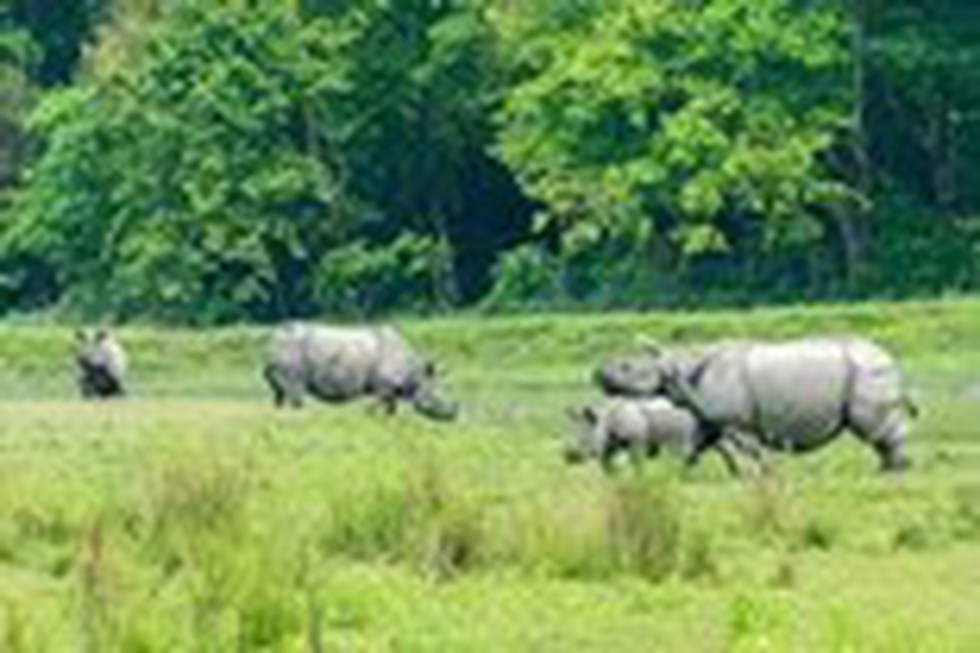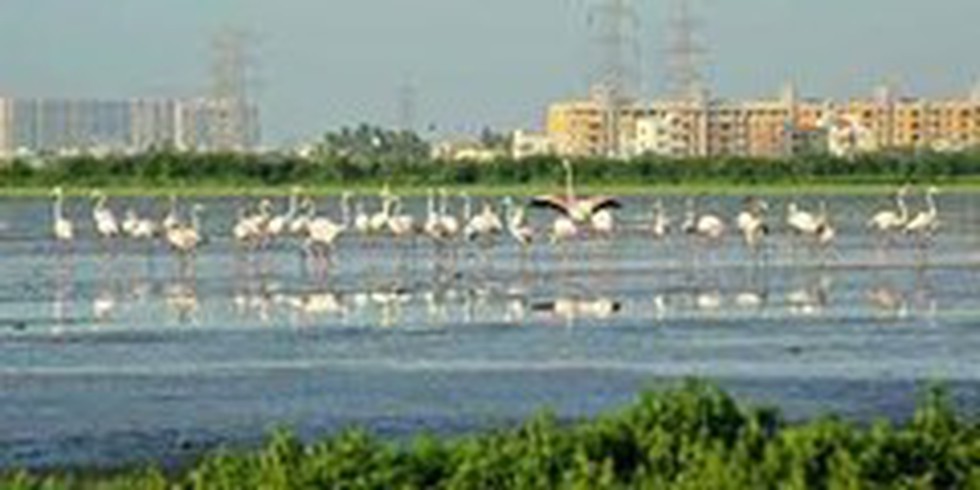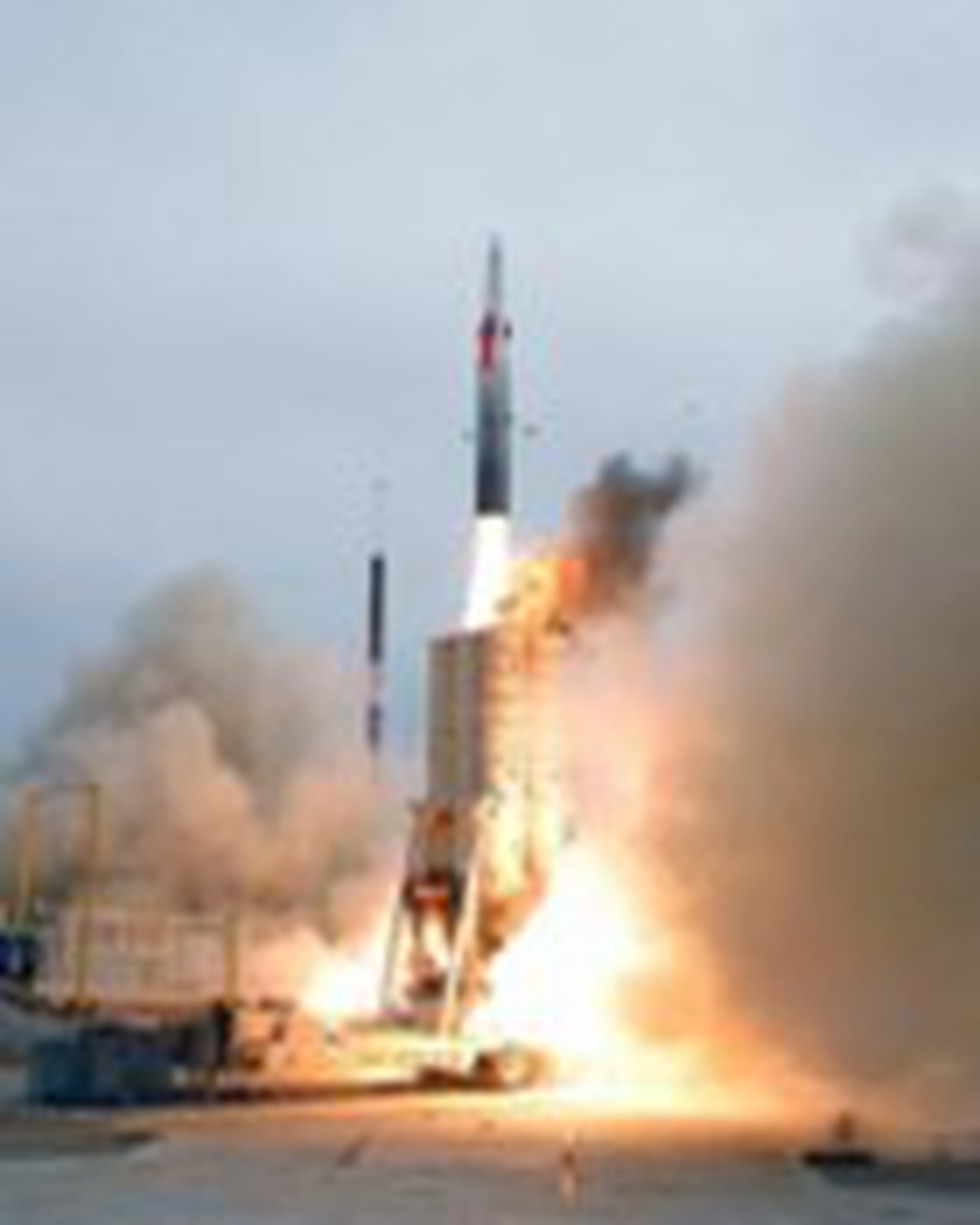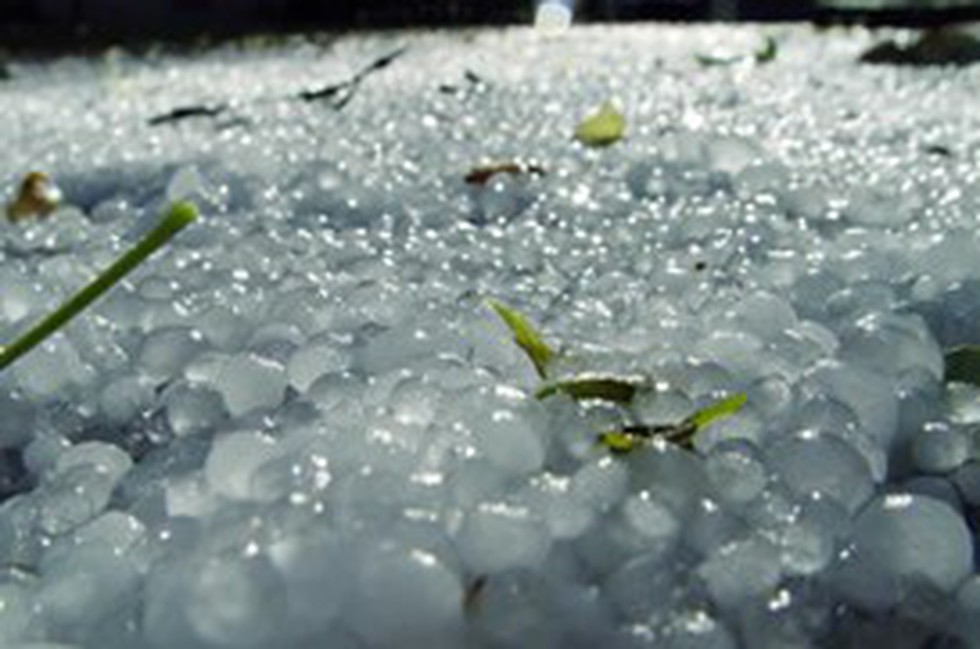
About Jaderi namakatti:
- These are clay sticks that are white in colour, usually available in finger-like shape with a smooth texture.
- Jaderi is a small village in Tiruvannamalai district of Tamil Nadu.
- There are around 120 families in Cheyyar taluk whose primary occupation has been the making of namakatti for more than hundreds of years now.
- Namakatti is made up of the rich deposit of hydrous silicate minerals that form fine grain particles of clay.
- The clay is processed and shaped in a finger like structure.
- The production of namakatti depends on the climatic condition as it needs a lot of sunlight to dry.
- It is used to adorn the foreheads of idols, men, and temple elephants as well as traditionally to treat stretch marks caused by by childbirth.
Key facts about Geographical Indication
- It is a sign used on products that have a specific geographical origin and possess qualities or a reputation that are due to that origin.
- This is typically used for agricultural products, foodstuffs, wine and spirit drinks, handicrafts and industrial products.
- The Geographical Indications of Goods (Registration and Protection) Act, 1999seeks to provide for the registration and better protection of geographical indications relating to goods in India.
- This GI tag is valid for 10 years following which it can be renewed.

About Kaziranga National Park:
- It is located in the state of Assam.
- It is part of the Eastern Himalayan biodiversity hotspots.
- It is also a UNESCO World Heritage Site and houses two-thirds of the total world population of greater one-horned rhinoceros.
- It is recognized as an Important Bird Area by BirdLife International for the conservation of avifaunal species.
- Flora:
- It is a mix of eastern wet alluvial grasslands, semi-evergreen forests and tropical moist deciduous forests.
- It is primarily famous for its dense and tall elephant grasses intermixed with small swamplands.
- It also includes an abundant cover of water lilies, water hyacinths and lotus.
- Fauna:
- It is home to the One-horned rhinoceros, Leopard, Fishing Cat, other Lesser cats, royal Bengal tiger, Large Indian Civet and Small Indian Civet etc
- It is also one of the last remaining homes of the endangered and endemic western hoolock gibbon, the only species of apes found in India.
- It is one of the last homes of the critically endangered Bengal florican.

About Fast Radio Bursts:
- A fast radio burst is a bright and brief burst of electromagnetic radiation (light) seen in radio-wave frequencies.
- They usually last for very short period of time.
- Some FRBs repeat, but the vast majority happen once and disappear forever.
- They reach earth from faraway galaxies, emitting as much energy in a millisecond as the sun does over weeks.
- Scientists don't know for sure what causes fast radio bursts.
- However, the current prevailing theory is that at least some FRBs are emitted by neutron stars.
- These stars form when a supergiant star collapses, going from eight times the mass of our sun (on average) to a superdense core only 20–40 kilometers across.
- Magnetars are neutron stars with extremely strong magnetic fields, and these have been observed to emit FRBs.
What recent study says?
- Previous studies have noted broad similarities between the energy distribution of repeat FRBs, and that of earthquakes and solar flares.
- However, new research at the University of Tokyo has looked at the time and energy of FRBs and found distinct differences between FRBs and solar flares, but several notable similarities between FRBs and earthquakes.

About Tilapia parvovirus (TiPV):
- It is a small, nonenveloped, single-stranded DNA (ssDNA) virus.
- It was first reported in China in 2019 and Thailand in 2021. India is the third country to report the occurrence of TiPV.
- This virus was localized in the gills, heart, brain, liver, pancreas, spleen, intestine, kidney, eyes, and muscles of tilapia.
Key facts about Tilapia fish
- Tilapia is a common name used for certain species of fishes belonging to the family Cich lidae (order Perciformes).
- These are freshwater species native to Africa.
- It is easily raised and harvested food fish.
- Their commercial advantages include resistance to disease, and a diet of readily abundant algae and zooplankton.
- Tilapia’ has emerged to be one of the most productive and internationally traded food fish in the world.
- The culture of tilapia has become commercially popular in many parts of the world and the fishery experts have dubbed the tilapia as “aquatic chicken” due to its quick growth and low maintenance cultivation.
- Mozambique tilapia was introduced to Indian fresh water bodies in the 1950s and it is called Jilabi in Tamil.
- Capable of surviving in low-oxygen levels in water, the fish has turned invasive across the country.
- Nile tilapia introduced in the 1970s is a little bigger and is cultured on a large-scale
- In India, tilapia farming is being carried out in different parts of Andhra Pradesh and Kerala.
- Although tilapia are robust and adapted to intensive farming conditions and environmental changes, disease outbreaks, particularly those with viral origins, continue to threaten tilapia production

About Pallikaranai marshland:
- It is a freshwater marsh and partly saline wetland situated about 20 kilometres south of the city of Chennai,Tamil Nadu.
- On its eastern periphery, the Marsh is flanked by the Buckingham Canal.
- The diverse ecosystem of the marshland supports some 115 bird species, ten mammals, 21 reptiles, ten amphibians, 46 fish, nine molluscs, five crustaceans, and seven butterfly species.
- These include notable species such as Russell’s viper (Daboia siamensis) and birds such as the glossy ibis (Plegadis falcinellus), grey-headed lapwings (Vanellus cinereus) and Pheasant-tailed jacana (Hydrophasianus chirurgus).
- Apart from its biodiversity value, the wetland also plays a vital role in the prevention of flooding for the city of Chennai, soaking up water during wet periods and releasing it during dry spells.
- The site is threatened by invasive and non-native species, household sewage, urban wastewater and droughts.
- It is one of the Ramsar sites from India.

About Sinai Peninsula:
- It is a triangle-shaped peninsula located in northeastern Egypt.
- It serves as a land bridge connecting Asia and Africa.
- Area: 23,500 square miles (61,000 square km).
- It is the sovereign territory of Egypt.
- Boundaries:
- The peninsula is bordered to the north by the Mediterranean Sea and to the east by Israel and the Gaza Strip.
- To the west of the Sinai Peninsula is the Suez Canal, across which lies the African part of Egypt.
- The Sinai is bordered to the southwest by the Gulf of Suez and to the immediate south by the Red Sea.
- The Gulf of Aqaba borders the Sinai in the southeast.
- Egypt shares maritime borders in the Sinai with Jordan and Saudi Arabia.
- History:
- In the late 19th century, Egypt, including the Sinai Peninsula, became part of the British Empire.
- British rule in Egypt would last until 1922, when the country was granted independence.
- The peninsula was occupied by Israeli forces during the Six-Day War of June 1967.
- It was returned to Egypt in 1982 under the terms of the peace treaty concluded between those countries in 1979.
- Geography: It is characterized by a diverse landscape, including mountain ranges, deserts, plateaus, and coastal regions.
- Population:
- The Sinai is sparsely populated; about 600,000 people live in the region.
- Today, the Sinai is mostly inhabited by Arab Egyptians and Bedouins.

About Jericho Missile System:
- Jericho is Israel's original ballistic missile programme, initiated in the 1960s and named after the biblical city located in the West Bank.
- This programme was initially a collaboration with the French aerospace company Dassault, but when France withdrew in 1969, Israel continued its development.
- Jericho-1:
- It had a weight of 6.5 tonnes, a length of 13.4 metres, and a diameter of 0.8 metres.
- It had a range of 500 kilometres and could carry a 1,000-kilogram payload, though it had a 50 percent chance of hitting within a 1,000-metre radius of its target.
- It was retired in the 1990s.
- Jericho-2:
- It was developed in the late 1980s, with a length of 15 metres and a diameter of 1.35 metres, while maintaining the same payload capacity.
- It had a range between 1,500 and 3,500 kilometres.
- Jericho-3:
- It is the first Israeli Intercontinental Ballistic Missiles (ICBM).
- It was first tested in 2008 and entered service in 2011.
- It featured improvements over the previous models, with a longer length than Jericho-2 and a larger diameter of 1.56 metres.
- It has an estimated launch weight of 29,000 kg and a payload of 1,000 to 1,300 kg.
- It has a range of 4,800 to 6,500 km and uses inertial guidance with a radar-guided warhead.
- The missile is reportedly equipped with a 750-kg nuclear warhead.

About Real Estate (Regulation and Development) Act, 2016:
- It is an act passed by the Indian Parliament in 2016for the regulation and promotion of the real estate sector in the country.
- This Act establishes a Real Estate Regulatory Authority (RERA) in every state to regulate the real estate sector and serve as the adjudication body to enable quick resolutions.
- It makes it mandatory to register a real estate project with RERA, where the land area is more than 500 square meters or the number of apartments exceeds 8.
- It applies to both residential and commercial real estate, whether undertaken by a private or public body.
- Salient Provisions:
- Security:
- At least 70% of the buyer's and investor's money will be deposited in a special account.
- The remaining 30% will then be allocated to the builders for construction and land-related expenses only.
- Developers and builders are not allowed to claim more than 10% as an advance payment on the property before the sale contract is signed.
- Transparency: Builders are required to provide the original plans for all projects they carry out. They are not allowed to alter the plans without the buyer's permission.
- Fairness:
- RERA has mandated that developers sell properties on the basis of carpet area rather than high-density area.
- If the project is delayed, buyers have the right to recover the full amount of their investment, or they can opt for an investment and receive a monthly return on their investment.
- Quality: The builder must rectify any issue faced by the buyer within 5 years of purchase. This issue must be rectified within 30 days of the complaint.
- Security:
- Other Features:
- Establishment of a fast-track mechanism for the settlement of disputes. This will be done via an appellate tribunal and dedicated adjudicating officers.
- Each state/UT has to establish its own RERA and Appellate Tribunal and also appoint adjudicating officers.
- In case a promoter wishes to transferor assign a majority of your rights and liabilities in a real estate project to a third party, written consent from two-thirds of the allottees will be needed in addition to the written approval of RERA.
- If a person has any problems regarding a violation of the provisions or rules of this Act by a promoter, buyer, or agent, they can file a complaint with RERA.
- While an enquiry is taking place, RERA can stop an agent, promoter, or buyer from continuing any activity against which a complaint has been raised.
- If any of RERA’s decisions regarding a complaint is not satisfactory, the aggrieved party can submit an appeal before the Appellate Tribunal.
- If the promoter fails to follow RERA’s orders, they will have to pay a penalty. This amount could be up to 5% of the evaluated cost of the property.
- If the Appellate Tribunal’s orders are not complied with, a penalty will have to be paid. This can either be imprisonment for up to 3 years, or a fine (up to 10% of the approximate cost of the project), or both.
- If a company commits an offence under this act, any person who was in charge of the business at the time of the offence being committed by the company will be held guilty and punished.
- No civil court will have any jurisdiction with respect to any matter that comes under RERA or the Appellate Tribunal’s jurisdiction. As such, no court can grant an injunction with regard to any action taken by RERA or the Tribunal.

About Hailstorm:
- Hail is a type of solid rain made up of balls or lumps of ice.
- Storms that produce hail that reaches the ground are known as hailstorms.
- They typically last for no more than 15 minutes but can cause injuries to people and damage buildings, vehicles, and
- They are most common in the midlatitudes.
- Hailstorms can sometimes be accompanied by other severe weather events, such as cyclones and tornadoes.
- Size: The size of hailstones can vary widely, from small pellets less than 1/4 inch in diameter to larger stones measuring several inches in size.
- Conditions for Hailstorms to occur:
- Highly developed Cumulonimbus clouds need to be present. These are the massive anvil or mushroom-shaped clouds that are seen during thunderstorms, which can reach heights of up to 65,000 feet.
- There must be strong currents of air ascending through these clouds. These currents are commonly known as updrafts.
- The clouds will need to contain high concentrations of supercooled liquid water.
- How are Hails formed?
- It begins as a water droplet that is swept up by an updraft inside of a thundercloud.
- Other supercooled water droplets which are already present inside the cloud will adhere to the water droplet’s surface, forming layers of ice around it.
- As the water droplet reaches higher elevations within the cloud, it comes into contact with more and more supercooled particles.
- The hail embryo will grow larger and larger as it reaches higher altitudes in the updraft.
- Finally, it will reach a size and weight where gravity will begin to act on it and pull it down.
- Large hailstones are often characterized by alternating layers of clear and opaque ice, caused by irregular rates of freezing.

About Stock Split:
- A stock split happens when a company increases the number of its shares to boost the stock's liquidity.
- It is a corporate action in which a company issues additional shares to shareholders, increasing the total by the specified ratio based on the shares they held previously.
- Although the number of shares outstanding increases, there is no change to the company's total market capitalization as the price of each share will split as well.
- The most common split ratios are 2-for-1 or 3-for-1 (sometimes denoted as 2:1 or 3:1). This means that for every share held before the split, each stockholder will have two or three shares, respectively, after the split.
- The number of shares increases, but the price per share goes down in proportion.
- Why is a stock split done?
- It is done to infuse liquidity and to make shares affordable for various investors who could not buy the shares of that company before due to high prices.
- It is sometimes aimed at helping a company meet the minimum requirements to remain listed on an exchange. This is because some stock indexes are price-weighted, meaning a company wishing to join the index would need to have, among other criteria, a price that falls within a certain band.
- What is a Reverse Stock Split?
- It is the opposite transaction, in which a company lowers, instead of increasing, the number of shares outstanding, raising the share price accordingly.
- The total value of your shares would remain consistent.


.png)
.png)
.png)
























































































































































.png)
.png)
.png)
.png)
.png)


.png)
.png)
.png)





.png)
.png)






.png)
.png)
.png)
.png)
.png)
.png)

.png)







.png)
.png)


.png)
.png)
.png)


.png)

.png)
.png)





.jpg)

.png)
.png)


.png)

.png)
.png)
.png)

.jpg)

.jpg)


.png)

.png)
.png)
.png)
.png)
.png)
.png)
.png)
.png)
.png)
.png)




.png)

.png)





.png)
.png)
.png)
.png)
.png)
.png)
.png)
.png)
.png)
.png)
.jpg)
.jpg)

.png)
.png)
.png)
.png)
.png)
.png)
.png)
.png)
.png)
.png)
.png)
.png)
.png)
.png)
.png)
.png)
.png)
.png)
.png)
.png)
.png)
.png)



.png)
.png)

.jpg)
.jpg)


.jpg)
.jpg)
.jpg)
.jpg)
.jpg)

.jpg)








.jpg)
.jpg)
.jpg)
.jpg)
.jpg)

















.jpg)
.jpg)







.jpg)


















.jpg)
.jpg)






























































































.jpg)
.jpg)


























.jpg)

.jpg)










.jpg)








.jpg)




.jpg)










.jpg)


















.jpg)












































.jpg)














.jpg)
.jpg)
.jpg)





.jpg)

.jpg)
.jpg)





































































.jpg)


































.jpg)
.jpg)
















































.jpg)












.jpg)


.jpg)




.jpg)
.jpg)
.jpg)

.jpg)
.jpg)
.jpg)
.jpg)

.jpg)
.jpg)
.jpg)

.jpg)
.jpg)
.jpg)
.jpg)
.jpg)
.jpg)
.jpg)
.jpg)

.jpg)


.jpg)
.jpg)
.jpg)
.jpg)
.jpg)
.jpg)
.jpg)
.jpg)
.jpg)
.jpg)











.jpg)
.jpg)





.jpg)
.jpg)
.jpg)
























.jpg)
























.jpg)









.jpg)
.jpg)







.jpg)
.jpg)









































.jpg)
.jpg)
.jpg)
.jpg)
.jpg)

.jpg)
.jpg)
.jpg)
.jpg)
.jpg)


.jpg)
.jpg)
.jpg)
.jpg)
.jpg)

.jpg)
.jpg)
.jpg)
.jpg)
.jpg)
.jpg)
.jpg)
.jpg)
.jpg)
.jpg)
.png)

.png)
.png)

.png)
.png)
.png)
.png)


.jpg)
.jpg)

.jpg)
.jpg)
.jpg)

.png)
.png)
.png)
.png)
.png)
.png)
.png)

.png)
.png)
.png)
.png)
.png)
.png)
.png)
.png)
.png)
.png)





































































-min.png)



.png)




.png)








































